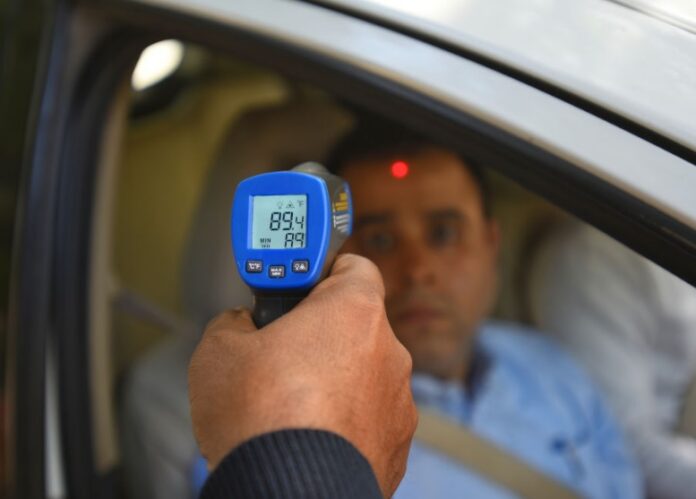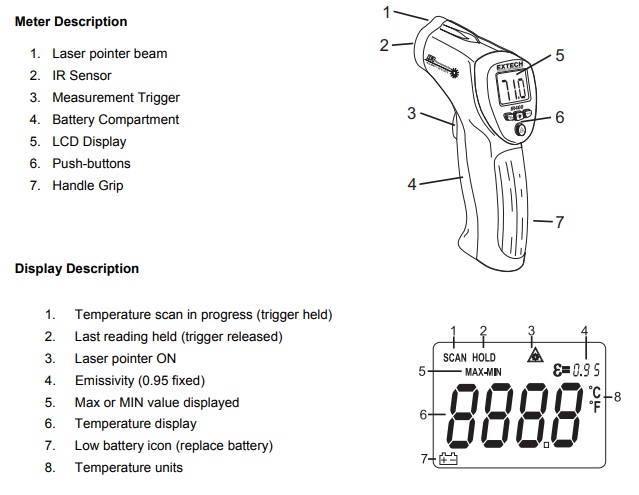
A non-contact or infrared thermometer gun is a device that can quickly determine surface skin temperature of people in high throughput areas such as airports, businesses, warehouses, factories, where other temperature assessment products may be in short supply. These thermometer guns work on infrared thermal detection systems (ITDS). Thermalcameras.guide is a great resource to learn more about this technology and its practical applications.
Infrared thermometers have become a necessity as an effective means of detecting fever, a common symptom of COVID-19, during the times of the current pandemic, which is spreading across the globe rapidly.
Infrared thermometer guns are useful only for an initial check of elevated body temperature at entry points. The accuracy may vary depending on the proper device calibration and environmental temperature. However, these non-contact devices are faster and safer than other temperature assessment devices, such as oral thermometers, that require physical contact and increase the risk of spreading infection.
To measure the surface skin temperature, the operator needs to hold the device by its handle, point the IR sensor toward the forehead or close to the eyes, and pull and hold the trigger to begin testing. Temperature results immediately appear on display.

There are plenty of infrared thermometers available in the market right now. Typically, all models have IR sensors, measurement trigger, and an LCD that indicates max or min reading, temperature readout, SCAN measuring indicator, laser pointer, alarm, battery icon, and emissivity readout.
In this post, we will explain some of the essential guidelines to remember to improve the infrared thermometers’ efficiency and accuracy.
- The IR gun measures body temperature only for reference. It is not for medical evaluations.
- Calibrate the device properly to ensure proper function and accurate measurements.
- The Distance to Target Ratio is usually indicated on each thermometer or in the instructions. The suggested measuring distance to the forehead is 5cm (2in). As the distance increases, the spot size of the area measured also increases.
- The reading may fluctuate if the IR gun is moved during measurement.
- When measuring body temperature, make sure to move the hair or sweat if obstructing measurement.
- The device can automatically compensate for deviations in ambient temperature. For best results, allow the gun to adjust to the ambient temperature for 30 minutes before use.
- Before measuring, be sure to clean surfaces covered with frost, oil, grime, etc.
- The laser should be used as a guide to help indicate the area you are testing.
- If the thermometer allows the setting of emissivity, it should be set for 0.95 to 0.97 for the following tests. Some thermometers are factory-set.
- You can perform Ice Water Test to improve the accuracy of the thermometer.
- Remember that it will take up to 30 minutes for the IR sensor to stabilize if going from ambient temperatures to a much higher (or lower) temperature measurement.
- Steam, dust, and smoke can prevent the accuracy of the reading. Therefore, the device should be cleaned with a damp cloth and mild detergent when necessary. You can also clean the lens with compressed air, soft brush, or a moist cotton swab. Do not use solvents or abrasives. Clean the housing with mild soap on a cloth or sponge. Avoid scratching the lens or sensor.
- Protect the IR gun from water, sunlight, shock, and other extreme environments. Store the device in an area with moderate temperature and humidity.
- If the battery is insufficient, the Low Battery icon will appear on the LCD. Open the battery cover, install a fresh 9V battery and securely close the lid. The device automatically powers down after 10 seconds once the trigger is released.
- Use caution when the laser beam is turned on. Do not let the beam enter the eyes or let the beam strike the eye from a reflective surface.
- The device has a laser pointer, and it should be kept away from children.
- Do not allow the laser to strike on any gas which can explode.
- Read the user manual from the manufacturer to understand the product specifications and guidelines.
- Follow the instruction manual for troubleshooting.
- For service, use only the manufacturer’s specified parts.





















